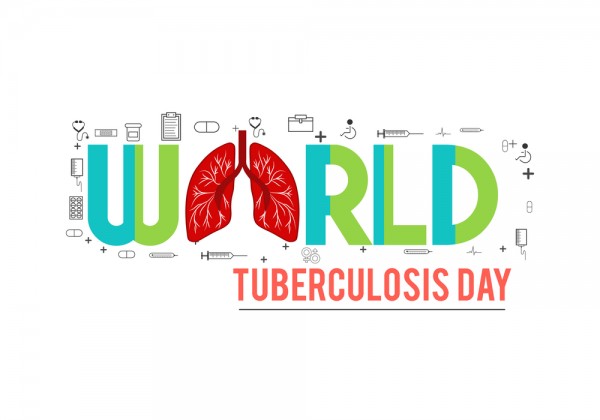
March 24 has been chosen as World Tuberculosis day – commemorating the 1882 date when Dr. Robert Koch announced his discovery of Mycobacterium tuberculosis, the bacillus bacteria responsible for tuberculosis (TB).
At the time of his discovery, tuberculosis was an enormous issue in the world – nearly 1 in 7 deaths in Europe could be traced back to tuberculosis – also known then as “consumption”. Around 80% of all people who developed “active tuberculosis” would die because of it, and many brave nurses perished while attempting to help treat patients.
Today, much of the developed world has been rid of this terrible disease thanks to modern innovations like vaccinations, advanced medical treatments, and increased quarantining precautions for infected individuals.
However, tuberculosis still remains a dangerous, widespread disease in much of the developing world. Whether you’re working in a hospital in a developed country like the US, or volunteering as a nurse in a developing nation, it’s important to get a better perspective on tuberculosis around the world.
In an effort to spread the world about tuberculosis, we’ve put together 7 shocking facts about tuberculosis mortality, infection rates, and prevalence around the world, as compiled by the WHO. Take a look – and share your knowledge with others to help combat this disease.
- In 2015, There Were 10.4 Million New Cases Of Tuberculosis Around The World
While tuberculosis is uncommon in the developed world, there are still millions around the world who are affected. Developing nations are the most commonly afflicted by high rates of tuberculosis infection. Six countries – India, Indonesia, China, Nigeria, Pakistan, and South Africa – contribute to nearly 60% of overall worldwide TB infections.
- Tuberculosis Kills More People Worldwide Than HIV Or Malaria
This fact may shock some people – after all, HIV and malaria are two of the most dangerous afflictions in the developing world. However, tuberculosis is responsible for more preventable deaths than either of these diseases.
In 2015, TB claimed 1.8 million lives – including more nearly 400,000 HIV-positive individuals, placing it near the top of the list of the top 10 worldwide causes of deaths.
- 1 Million Children Were Diagnosed With Tuberculosis In 2015 – and 200,000 Died
Diagnosing children with tuberculosis can be very difficult – non-specific symptoms and diagnostic difficulties can lead to poor recognition of TB signs and symptoms, leading to high mortality rates among children. TB is often mistaken for a variety of other common childhood diseases, leading to decreased efficacy of care.
Children also have a less highly-developed immune system, leaving their bodies weaker and preventing them from fighting the infection effectively. Combined, these factors lead to a high rate of deaths for children infected with tuberculosis.
- Tuberculosis Is The Leading Cause Of Death Among HIV-Positive People
Tuberculosis can wreak havoc on the body of any individual with a compromised immune system – and is especially dangerous to HIV-positive individuals. It’s estimated that about 35% of all deaths among HIV-positive individuals can be attributed to tuberculosis – making TB the single largest cause of death among HIV patients.
- Tuberculosis Is In Decline – But Still A Problem
Tuberculosis is declining in prevalence as modern techniques prevent the spread of the disease, and cure infected individuals. Overall, deaths from TB have dropped more than 22% between 2000 and 2015.
However, rates of decline are much slower in the developing world. While deaths in Europe have dropped by nearly 6.2%, deaths in the African region have declined only by 2.2%. Further treatment and aid to infected individuals will certainly be required to continue this trend, and address the high infection rates of developing countries.
- In 2014, The Treatment Success Rate For TB Patients Was 83%
Treatment for tuberculosis is highly effective – nearly 83% of patients treated for TB in 2014 were able to make a recovery, and continue living a normal life. However, large treatment gaps remain worldwide.
Only about 60% of all 10.4 million 2015 TB cases were diagnosed – leaving a gap of 4.3 million undiagnosed, untreated cases. Further efforts must be made to find, diagnose, and treat these vulnerable people, and further reduce the spread of TB worldwide.
- Multiple-Drug-Resistant TB Could Be A Huge Health Threat In The Future
Currently, tuberculosis isn’t much of a threat in the developed world. However, Multiple-Drug-Resistant Tuberculosis (MDR-TB) could pose a new challenge, even for those of us who live in wealthy countries. Around 480,000 cases of MDR-TB were reported worldwide in 2015. This form of drug-resistant tuberculosis can resist both isoniazid and rifampin – the two most commonly-prescribed front-line anti-TB medications. MDR-TB requires much longer treatment times – often 4-6 months – and, if left unchecked, it could become much more common, even in the developed world.
Share Your Knowledge – And Save Lives
Tubeculosis is far from being a “disease of the past.” As you can see, it’s still extremely common around the world in developing nations, and one of the leading causes of preventable death worldwide.
To stop this terrible disease, we must share our knowledge – and be aware of the impact that tuberculosis has around the world. So take action – join organizations like the CDC, Stop TB Partnership, and the WHO to spread the word, and get involved in the fight against tuberculosis.

















